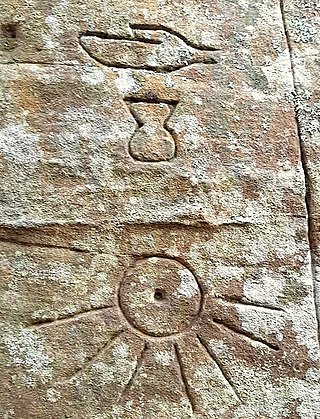
Archaeological forgery is the manufacture of supposedly ancient items that are sold to the antiquities market and may even end up in the collections of museums. It is related to art forgery.

Dion is a village and municipal unit in the municipality of Dion-Olympos in the Pieria regional unit, Greece. It is located at the foot of Mount Olympus at a distance of 17 km from the capital city of Katerini.

Zeugma was an ancient Hellenistic era Greek and then Roman city of Commagene; located in modern Gaziantep Province, Turkey. It was named for the bridge of boats, or zeugma, that crossed the Euphrates at that location. Zeugma Mosaic Museum contains mosaics from the site, and is one of the largest mosaic museums in the world.
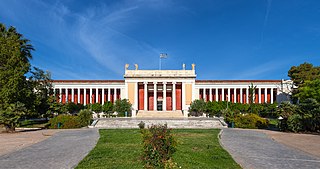
The National Archaeological Museum in Athens houses some of the most important artifacts from a variety of archaeological locations around Greece from prehistory to late antiquity. It is considered one of the greatest museums in the world and contains the richest collection of Greek Antiquity artifacts worldwide. It is situated in the Exarcheia area in central Athens between Epirus Street, Bouboulinas Street and Tositsas Street while its entrance is on the Patission Street adjacent to the historical building of the Athens Polytechnic university.

The Istanbul Archaeology Museums are a group of three archaeological museums located in the Eminönü quarter of Istanbul, Turkey, near Gülhane Park and Topkapı Palace.

Iasos or Iassos, also in Latinized form Iasus or Iassus, was a Greek city in ancient Caria located on the Gulf of Iasos, opposite the modern town of Güllük, Turkey. It was originally on an island, but is now connected to the mainland. It is located in the Milas district of Muğla Province, Turkey, near the Alevi village of Kıyıkışlacık, about 31 km from the center of Milas.
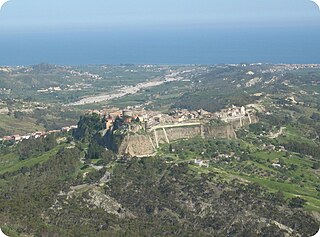
Caulonia is a comune (municipality) in the Province of Reggio Calabria in the Italian region Calabria, located about 60 kilometres (37 mi) southwest of Catanzaro and about 120 kilometres (75 mi) northeast of Reggio Calabria in the Stilaro Valley. Originally it was known as Castelvetere, but in 1862 the citizens decided to change the name of the town to that of the ancient city Caulonia. They believed that this city had been located on their territory, but it was eventually proved that ancient Caulonia was to be found near modern Monasterace, 16 kilometres (10 mi) to the northeast.

Monasterace is a comune (municipality) in the Province of Reggio Calabria in the Italian region Calabria, located about 50 kilometres (31 mi) south of Catanzaro and about 90 kilometres (56 mi) northeast of Reggio Calabria. The ruins of the ancient Greek city Caulonia are located a short distance north of the frazione Monasterace Marina, on the coast. Also north of Monasterace Marina is the Monasterace Archeological Museum, where finds from Caulonia are exhibited.

The Vallata dello Stilaro is a valley in the Province of Reggio Calabria of Southern Italy. It takes its name from river that flow in the area, the Stilaro.

The History Museum of Armenia is a museum in Armenia with departments of Archaeology, Numismatics, Ethnography, Modern History and Restoration. It has a national collection of 400,000 objects and was founded in 1920. Of the main collection, 35% is made up of archaeology-related items, 8% is made up of ethnography-related items, 45% is made of numismatics-related items, and 12% is made up of documents. It is regarded as Armenia's national museum and is located on Republic Square in Yerevan. The state financially supports the museum and owns both the collection and the building. The museum carries out conservation and restoration work and publishes works on Armenian architecture, archaeology, ethnography, and history. They also have published a series of reports on archaeological excavations since 1948. The museum carries out educational and scientific programs on Armenian history and culture as well.
The Treasure Valuation Committee (TVC) is an advisory non-departmental public body of the Department for Culture, Media and Sport (DCMS) based in London, which offers expert advice to the government on items of declared treasure in England, Wales, and Northern Ireland that museums there may wish to acquire from the Crown.
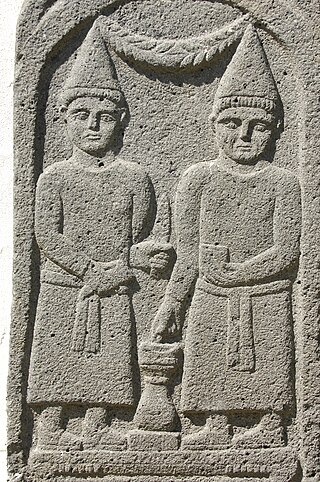
The Gaziantep Museum of Archaeology is an archaeological museum located in the city of Gaziantep, Turkey. It housed for some years a collection of mosaics, most of which were excavated from the ancient Roman city site of Zeugma. A new museum, the Zeugma Mosaic Museum now houses those. After an overhaul of the displays the museum now houses a fine collection of finds from the region. Exhibits include a collection of paleolithic artifacts; items from a Bronze Age necropolis; Hittite, Persian, Roman, Hellenistic, and Commagene artworks and glassware; Ottoman and Islamic coins and medallions; and the skeleton of a mammoth. Attached to the museum is a garden containing a selection of stone artifacts, including pagan tombstones from Zeugma, Christian tombstones, and Hittite statuary.
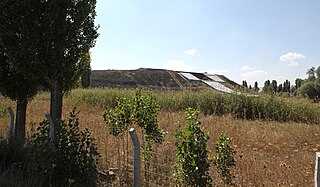
Kaman-Kalehöyük is a multi-period archaeological site in Kırşehir Province, Turkey, around 100 km south east of Ankara, 6 km east of the town center of Kaman. It is a tell or mound site that was occupied during the Bronze Age, Iron Age and Ottoman periods. Excavations in the mound have been carried out since 1986 under the direction of Sachihiro Omura, on behalf of the Middle Eastern Culture Center in Japan and the Japanese Anatolian Archeology Institute. The distance to Hattusa, the Hittite capital, is about 100 km.

The Odesa Archaeological Museum is one of the oldest archaeological museums in Ukraine. It was founded in 1825; the current museum building was completed in 1883 according to a design by Polish architect Feliks Gąsiorowski.

The Archaeological Museum of Pella is a museum in Pella in the Pella regional unit of Central Macedonia. The building was designed by architect Kostas Skroumpellos and is on the site of the ancient city of Pella. It was completed in 2009 with the support of the Greece's Third Community Support Framework.
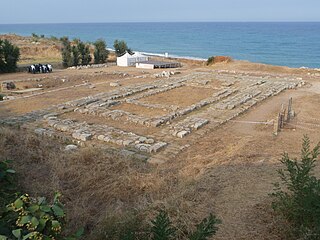
Caulonia or Caulon was an ancient city on the shore of the Ionian Sea near Monasterace, Italy.

Kırklareli Museum is a national museum in Kırklareli, Turkey, exhibiting natural history specimens, ethnographical items related to the region's history of cultural life, and archaeological artifacts found in and around the city. The director of the museum is Derya Balkan.

The Afyonkarahisar Archaeological Museum, also known as the Afyon Museum, is an archaeological museum in Afyonkarahisar, Turkey. It exhibits a wide variety of artifacts from the Copper Age, Bronze Age and the civilizations of Hittites, Phrygians, Ancient Greece and the Byzantine Empire.

Aydın Archaeological Museum is in Aydın, western Turkey. Established in 1959, it contains numerous statues, tombs, columns and stone carvings from the Hellenistic, Roman, Byzantine, Seljuk and Ottoman periods, unearthed in ancient cities such as Alinda, Alabanda, Amyzon, Harpasa, Magnesia on the Maeander, Mastaura, Myus, Nisa, Orthosia, Piginda, Pygela and Tralleis. The museum also has a section devoted to ancient coin finds.
Anamur Museum is a museum of archaeology and ethnography in Anamur ilçe (district) of Mersin Province, southern Turkey.






















